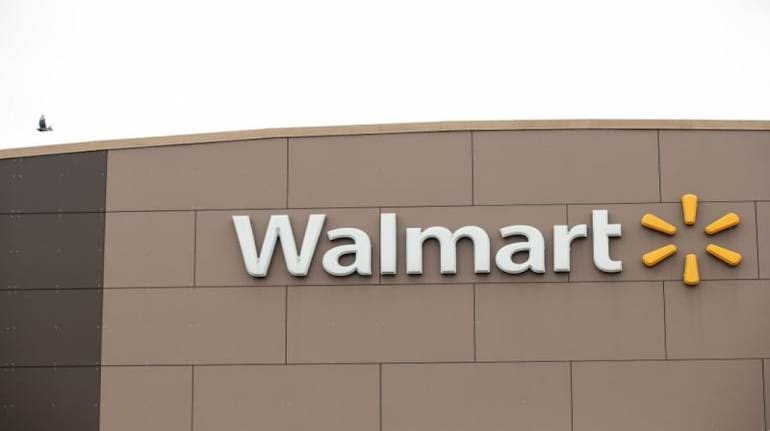



Walmart Inc. broke through the gloom cast by the likes of Target Corp. and Home Depot Inc. this earnings season. The cautious consumer was still in focus for Chief Executive Officer Doug McMillon and his team, but not enough to hold back an unusual, early upgrade to its annual profit forecast. Perhaps the best measure of its success is the fresh wave of competition hitting the groceries space, eyeing the higher-income households Walmart has been so pleased to welcome through its doors this past year.
As inflation drives consumers to cut back on extras, retailers are zeroing in on the one thing they can’t cut: food. Everyone needs to eat and Walmart has written the playbook on how to draw shoppers into stores with lower-margin grocery goods, and then nudge them to buy a few extras while they’re there. That strategy has helped the company thrive in tough consumer economies. But America’s biggest grocer may finally be getting some real competition as rivals build out plans to compete for those inflation-pinched mid- and high-income consumers looking for a deal — and shoppers stand to reap the benefits.
Dollar store competitors like Dollar General Corp. and Dollar Tree Inc. have the scale to pick up market share. There is one in nearly every town and city where they sometimes have a pseudo-monopoly on groceries. Walmart has strategically divested from smaller markets where it found business to be unprofitable, leaving a wide open lane for dollar stores to muscle through and threaten its hold over the grocery market from the side.
Target, a retailer popular with middle- and high-income households, has also ramped up its grocery offerings. It has hired more employees with relevant experience and improved its produce quality and presentation, Chief Food and Beverage Officer Rick Gomez told CNBC recently. As it struggles will a drop in discretionary spending, the company is leaning into food and beverages. The category grew by more than 61% between the first quarter of 2019 and this year’s first quarter, CEO Brian Cornell said on Wednesday.
Both Dollar Tree, which also owns the Family Dollar chain, and Dollar General have doubled down on their grocery businesses too. Dollar General currently offers fresh produce in more than 3,200 stores with plans to expand to a total of 10,000 stores in the coming years, including a “meaningful number” of stores located in food deserts, the company has said. Dollar Tree first started experimenting with a broader range of groceries in 2021. Now it’s expanding its frozen and refrigerated products across its store base to include a selection of proteins, pizza, and ice cream. The two companies and Target are also on a renovation spree, adding new refrigerators and freezers to carry additional fresh food goods and ramping up their supply chains to keep grocery shelves stocked.
They’ve got a lot of ground to make up. Walmart controls a quarter of the US grocery market (and that’s not counting Sam’s Club), far ahead of the competition. Its lead prompted one analyst to ask on Thursday: “You've been taking a lot of share from some of your bigger competitors in traditional grocery. Do you think they're ever going to respond?” Ouch. But success can breed complacency.
While dollar stores made up only an estimated 3.3% of grocery sales last year, Dollar Tree and Dollar General consistently ranked among the top five retailers where consumers bought groceries over the last two months of 2022, according to a US Consumer Tracker by the retail research company Coresight. They’re also bringing former Walmart executives into their c-suites. Dollar Tree hired former Walmart executive Jeffrey Davis last year as its chief financial officer; Dollar General brought on Walmart veteran Shweta Bhatia as its senior vice president of technology engineering.
One winner from the heightened interest in the grocery space will be consumers. Despite the “dollar” moniker, Walmart beats most of the field — except for discounter Aldi — when it comes to pricing. A Bank of America study released last month showed a cart of 33 items at Walmart amounted to $187.50, while the same cart at Target came to $194.15. It was $201.14 at Dollar General and $203.67 at Family Dollar. Walmart is already pushing its private brands and working with suppliers to drive down prices for prepared foods and consumable — more competition should only increase that focus.
CEO McMillon told investors Thursday that its price leadership is especially important now, adding, “we've got to all work harder to keep prices low for the American consumer.” Isn’t that just what we need to hear.
Leticia Miranda is a Bloomberg Opinion columnist
Discover the latest Business News, Sensex, and Nifty updates. Obtain Personal Finance insights, tax queries, and expert opinions on Moneycontrol or download the Moneycontrol App to stay updated!
Find the best of Al News in one place, specially curated for you every weekend.
Stay on top of the latest tech trends and biggest startup news.